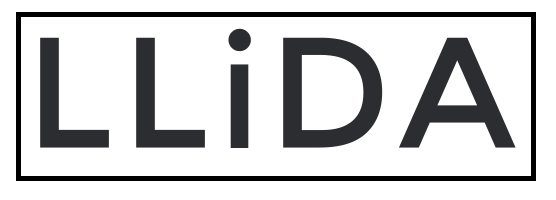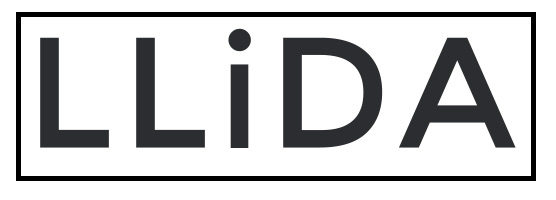In response to this challenge, what is currently being provided by institutions, and what difference is it making to learners?
Institutional policy/strategy
Due to a lack of clear ownership at institutional level, learning and digital literacies are rarely the basis of an integrated institutional strategy. Effective integration can be provided where the Learning and Teaching Strategy addresses learning in the digital age directly, and there are clear lines of action/responsibility to other strategies such as ICT, Quality, Employability, e-Learning, Learning Resources and devolved faculty/department and service-level strategies. A digital literacies champion should be capable of initiating action in both the digital and the academic/learning development area of institutional provision.
Institutions have to prepare themselves, and not just their learners, for an uncertain future. Among the paradigm-breaking scenarios considered in this study, a loss of confidence in paper qualifications is perhaps the one that should give institutions most cause for concern. Institutions must position themselves to respond quickly and flexibly to the need for new kinds of capability and to recognise and represent graduate capabilities in new ways.
The two exemplary strategies examined in this study had the following features:
- institution-wide changes to policy, clearly linked to main institutional drivers and priorities
- actions cascaded through a range of institutional strategies e.g. quality, ICT, and practices, e.g. course documentation
- an incremental approach, spearheaded by pilot projects/initiatives, some with external funding
- collaboration between central services and academic staff, principally around course development and review, involving multi-disciplinary development teams, with intensive resourcing
- large central unit (e-learning PLUS academic development) driving policy forward: in both cases with substantial national profile and hybrid teaching/development/research agenda
- ongoing research, evaluation and evidence-gathering about students’ experiences with technology and learning
- commitment to understanding the learning experience in a holistic way: ‘learning takes place in a technology-rich world’
- building on previous work, treating transformation as a long-term project
- moving people out of their silos, for example by creating hybrid and/or ‘roving’ roles
Practice in central services
Our study found consistent good practice in central provision for the three areas of academic/learning literacy, information literacy, and ICT skills. Staff in these areas have their own well-established cultures, frameworks and forums for sharing professional practice. In many cases, these cultures include a focus on learners as individuals, with their own preferred approaches and particular needs. The main problem is that they are still operating in relative isolation from one another, and – in many cases – from staff in departments too. Students’ digital and learning literacies are not often enough being assessed and supported as they engage in academic tasks. It is also not often acknowledged that students have many sources of support, including family, friends, social networks and online resources, but that they need help to integrate these into effective personal practices.
Organisational structures, the way in which services are resourced, and service/department cultures – e.g. different modes of supporting students – are all seen as barriers to the effective integration of literacies. One symptom of this in our study was the difficulty identifying people who could audit digital literacies provision across the board. Many potential auditors felt that too much relevant practice was hidden from them. It is suggested that librarians, ICT support staff, careers staff, specialist support staff such as WP and accessibility, and learning development staff are not learning effectively from one another and have limited opportunity to do so. From the background review, though not directly from our study, there is evidence that literacies transfer poorly across boundaries, a finding that makes joined-up support all the more critical.
Strategies often call for cross-departmental working, and we found examples of good integration between information and ICT support, sometimes including learning support, and in other places between academic practice and information literacy. Support is most effectively integrated where there is an institution-wide policy of assessing and progressing learners’ skills. In FE this is usually delivered around guidance tutorials, while in HE the availability of an e-portfolio system can be the catalyst and focus of provision. Employability is often the stated rationale for such an approach. However, careers staff were difficult to reach in our study, and although ’employability’ extends beyond careers, we draw a tentative connection between the lack of engagement with the ‘literacies’ agenda by careers staff and a tendency for ’employability’ itself to be poorly articulated and supported.
Librarians have a long tradition of supporting literacies and working with academic departments, so there is a large literature describing their practice and well-established mechanisms for sharing it. These include the SCONUL 7 pillars of information literacy, the only framework from our study that had any recognition on the ground. One problem, though, is that where librarians have championed the digital aspects of information literacy, this is regarded as having ‘solved’ the problem of the digital in learning. Our study found very little central support for media literacy, including critical aspects of reading different media and creative practices of media production. There was also very little mention of communicating and sharing ideas either as an aspect of information literacy or in its own right. Effective learners require both of these, and other digital capabilities such as navigating virtual and immersive worlds, managing digital identities and reputation, and using digital technologies for reflecting, planning and making sense of their learning experiences. While librarians can be regarded as pioneers in articulating the impact of digital technologies on their area of expertise and adapting their practices of support, digital literacies cannot be left to librarians if they are to be embedded throughout the institution.
Practice in the curriculum
Our audit institutions exhibited great diversity in the literacies mandated for consideration during the curriculum design and validation process. A small number of explicit frameworks were in use, and the language of the ‘key skills’ agenda remained in evidence, but the majority of institutions seem to have developed an ad hoc approach.
We identified three modes of integrating literacies:
1. Institution-wide programme (usually portfolio-based) with generic processes of review and reflection, but the specific skills practised and assessed in subject modules
2. Skills modules or module components, delivered alongside ‘subject’ teaching, typically by central services staff: may include tailored (subject-specific) tasks or examples
3. Literacy provision fully integrated into modules and/or programmes of study, including learning outcomes and assessment: typically in professional/vocational programmes that are already competence-based (but in one case via the tutorial system).
More evidence of outcomes and impact from (1) is likely to come from JISC-funded e-portfolio projects.
Where skills are delivered as separate components (2), there is a danger they will not be seen as central or compulsory elements of the learning experience. Our findings confirm other research that segregating skills is demotivating. While tailored versions of central service workshops are undoubtedly better than no provision, course teams are advised to rethink learning tasks and assessment criteria to give more importance to literacies for life across the curriculum. This is particularly important in a context where fewer students can expect to get jobs that are directly related to their subject of study.
An interesting cluster of ‘deeply’ embedded examples (3) focused on students rethinking concepts of space and working on the boundaries of real and virtual spaces to express their ideas. This is an exciting development, but we are concerned to find few other examples of radical thinking, e.g. around disrupted concepts of knowledge, identity or practice. There was also very little evidence in our study of feedback on coursework or assessment being used to support learners’ development, e.g. to signpost resources the learner might access or study strategies to practice. The exception was at Oxford University, where subject-specific goals, assignments and feedback are intrinsically linked with personal academic development through weekly tutorials. Other institutions might well struggle to replicate such a system with larger group sizes and with less self-directed students.
The great majority of our examples across all modes came from vocational and professional courses, and there is plenty of evidence that these are the subjects spearheading support for literacies in the curriculum. In work-based settings, problems are encountered in an authentic setting, their resolution is intrinsically rewarding, and ‘competencies’ are simply aspects of task performance. In formal learning, more effort needs to be taken to ensure there are opportunities for learners to practice and evidence what they can do. This ties in with the recommendations of the Burgess report and the UK Commission for Employment and Skills which emphasise the need for 21st century graduate skills to be integrated into learning activities across the curriculum.
We are aware that much excellent practice in disciplines was not visible to our study methods. Many literacies are so deeply and tacitly embedded in subject teaching that academic staff do not identify their practice as literacy-based at all. Examples might be visual literacies in art or critical media literacies in media studies. Recognising that different subjects can contribute expertise in different literacies for learning is a first step towards finding and sharing good practice.
One important strength of ‘traditional’ academic teaching in disciplines is that it recognises learning not as the collection of competences but as the emergence of an identity. Particularly in higher education, learning is about being able to take up a personal stance in relation to subject knowledge and expertise. In a digital age, learners need to practice and experiment with different ways of enacting their identities and adopt subject positions through different social technologies and media. These opportunities can only be provided by academic staff that are themselves engaged in digital practice.
Learners supporting learners
Social software is now widely being used to enable peer mentoring and group support, for example around skills workshops, during induction and first-semester studies, on placement, and for group work. There is also evidence of the learner voice being captured and shared via videos, blogs and podcasts. Study buddy and student mentor initiatives rarely address digital literacies directly, but could be adapted to do so: student help-desks are common for supporting proficiency with digital devices and networks. All of these approaches are being tried by central service staff with good evidence of success.
Inevitably much peer support takes place under the academic radar, but academic staff can help by being explicit about what kinds of collaboration are appropriate, establishing peer review processes, and setting group assignments.
Problems with current provision for digital literacies include:
- institutional silos, so learners often have several places to seek help with their learning, and cultural differences can make cross-service/dept collaboration difficult
- (often) poor embedding of literacies into the curriculum, particularly at the level of feedback and assessment
- (often) poor integration of information/digital literacies with academic/learning literacies
- curriculum provision tends to be one-off and cohort-based, rather than based on an ethos of personal development: central provision is more personal and developmental but rarely reaches learners when they are actually engaged in authentic tasks
- Academic staff perceive students as being more digitally capable than is really the case
- poor self-evaluation by learners, particularly in relation to their information skills, so voluntary services are not reaching those in most need, and skills modules are not perceived as relevant or important


